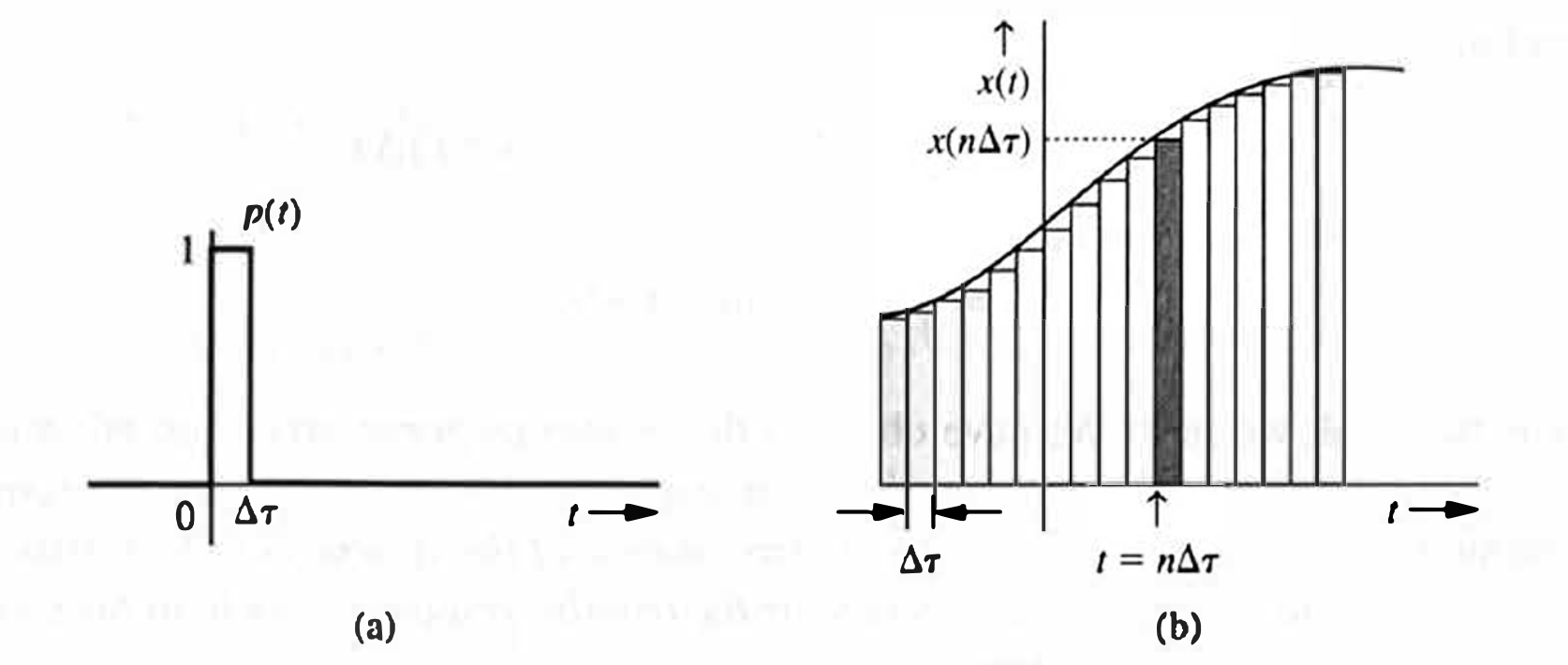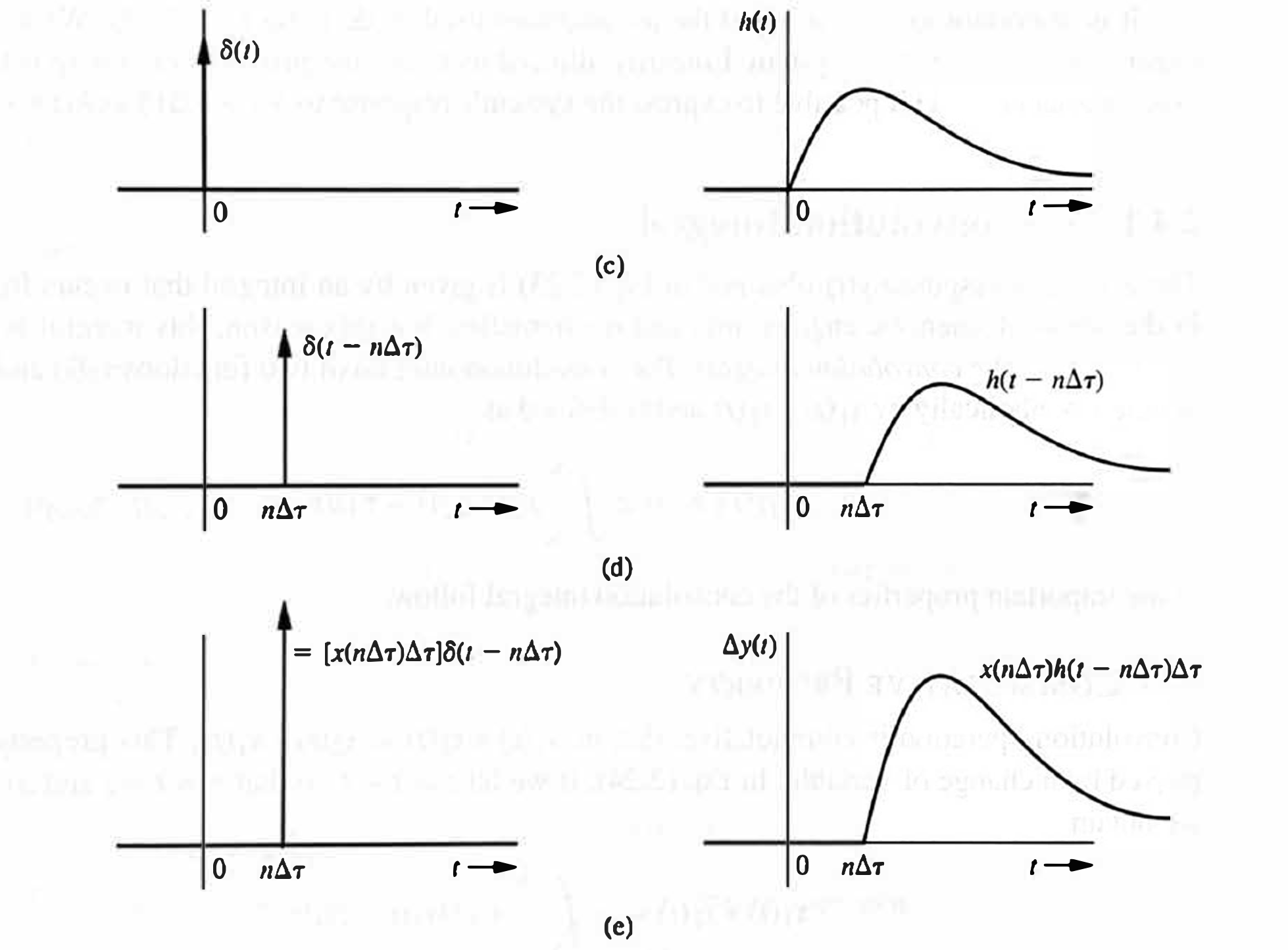The Zero-State Response
Sources:
- B. P. Lathi & Roger Green. (2021). Chapter 2: Time-Domain Analysis of Continuous-Time Systems. Signal Processing and Linear Systems (2nd ed., pp. 168-195). Oxford University Press.
This section is devoted to the determination of the zero-state response(see past post) of an LTIC system. We shall assume that the systems discussed in this section are in the zero state unless mentioned otherwise.
The zero-state response
We shall use the superposition property for finding the system response to an arbitrary input

Let us define a basic pulse
The term

Therefore,
To find the response for this input

and also shown by directed arrow notation as follows:
Therefore, in a linear time-invariant (LTI) system,
Thus, we have obtained that, in a LTI system (also, recall that we have a zero-state assumption), knowing the unit impulse response
The LTI system assumtption is important. Linearity allowed us to use the principle of superposition, and time invariance made it possible to express the system's response to
If the system is time-varying, then the system response to the input
where
The Convolution Integral
The zero-state response
The convolution integral of two functions
It can be proved easily that convolution is a linear operation.
Properties of the convolution integral
Some important properties of the convolution integral follow.
The Commutative Property
Convolution operation is commutative; that is,
The Distributive Property
According to the distributive property,
The Associative Property
According to the associative property,
The proofs of the distributive property and the Associative Property follow directly from the definition of the convolution integral.
The Shift Property
If
More generally, we see that
Proof: We are given
Therefore,
Convolution with a Unit Impulse
Convolution of a function
Because
The Width Property
If the durations (widths) of

The (zero-state) response and causility
For a LTIC system, since it has already been a LTI system, its (zero-state) response
The causality restriction on both signals and systems further simplifies the limits of integration in

It is important to remember that the integration in
Similarly, if
Observe that if
Therefore,
The lower limit of integration is taken as
Example: Computing the Zero-State Response
For an LTIC system with the unit impulse response
Solution:
Here, both

Hence, we obtain
Because
Remember that the integration is performed with respect to
Moreover,
The response is depicted in Fig. 2.6c.
Interconnected systems

By its definition, the response of unit impulse